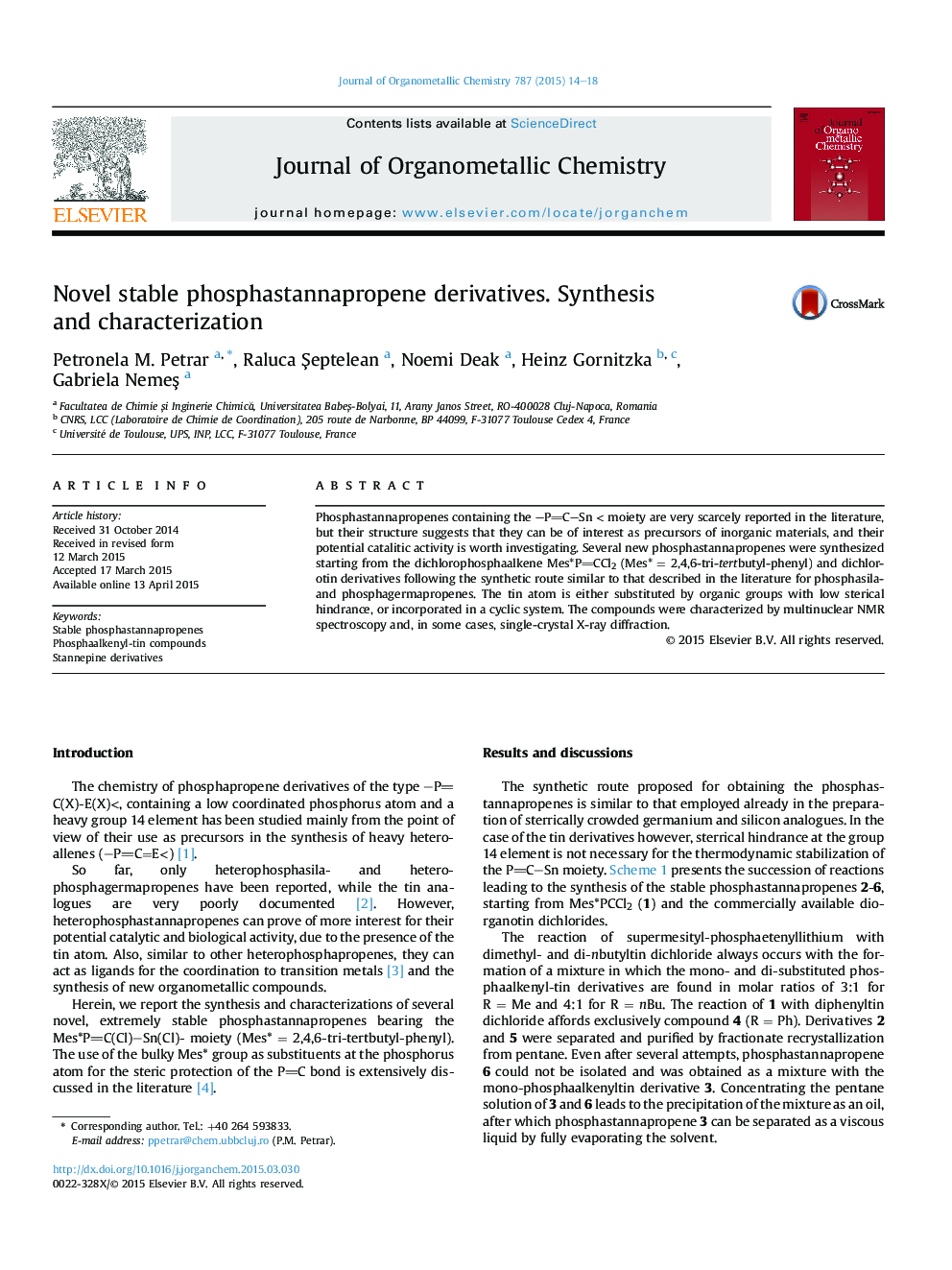| Article ID | Journal | Published Year | Pages | File Type |
|---|---|---|---|---|
| 1323323 | Journal of Organometallic Chemistry | 2015 | 5 Pages |
•New mono(phosphaalkenyl)tin derivatives of the type Mes*PC(Cl)–Sn(Cl)R2 were obtained.•The formation of two di(phosphaalkenyl)tin compounds [Mes*PC(Cl)]2SnR2 is also evidenced.•The structure of the stable phosphastannapropenes was determined by NMR spectroscopy and in some cases, by X-ray diffraction.
Phosphastannapropenes containing the –PC–Sn < moiety are very scarcely reported in the literature, but their structure suggests that they can be of interest as precursors of inorganic materials, and their potential catalitic activity is worth investigating. Several new phosphastannapropenes were synthesized starting from the dichlorophosphaalkene Mes*PCCl2 (Mes* = 2,4,6-tri-tertbutyl-phenyl) and dichlorotin derivatives following the synthetic route similar to that described in the literature for phosphasila- and phosphagermapropenes. The tin atom is either substituted by organic groups with low sterical hindrance, or incorporated in a cyclic system. The compounds were characterized by multinuclear NMR spectroscopy and, in some cases, single-crystal X-ray diffraction.
Graphical abstractTreatment of the P-supermesityl-C,C-dichloro-phosphaalkene Mes*PCCl2 with butyl-lithium, followed by the addition of dihaloorganotin compounds at low temperature leads to new mono(phosphaalkenyl)tin derivatives Mes*P=C(Cl)-Sn(Cl)R2. The formation of two di(phosphaalkenyl)tin compounds [Mes*P=C(Cl)]2SnR2 is also evidenced. The structure of the new phosphastannapropenes was established by NMR spectroscopy and in some cases, by X-ray diffraction.Figure optionsDownload full-size imageDownload as PowerPoint slide
